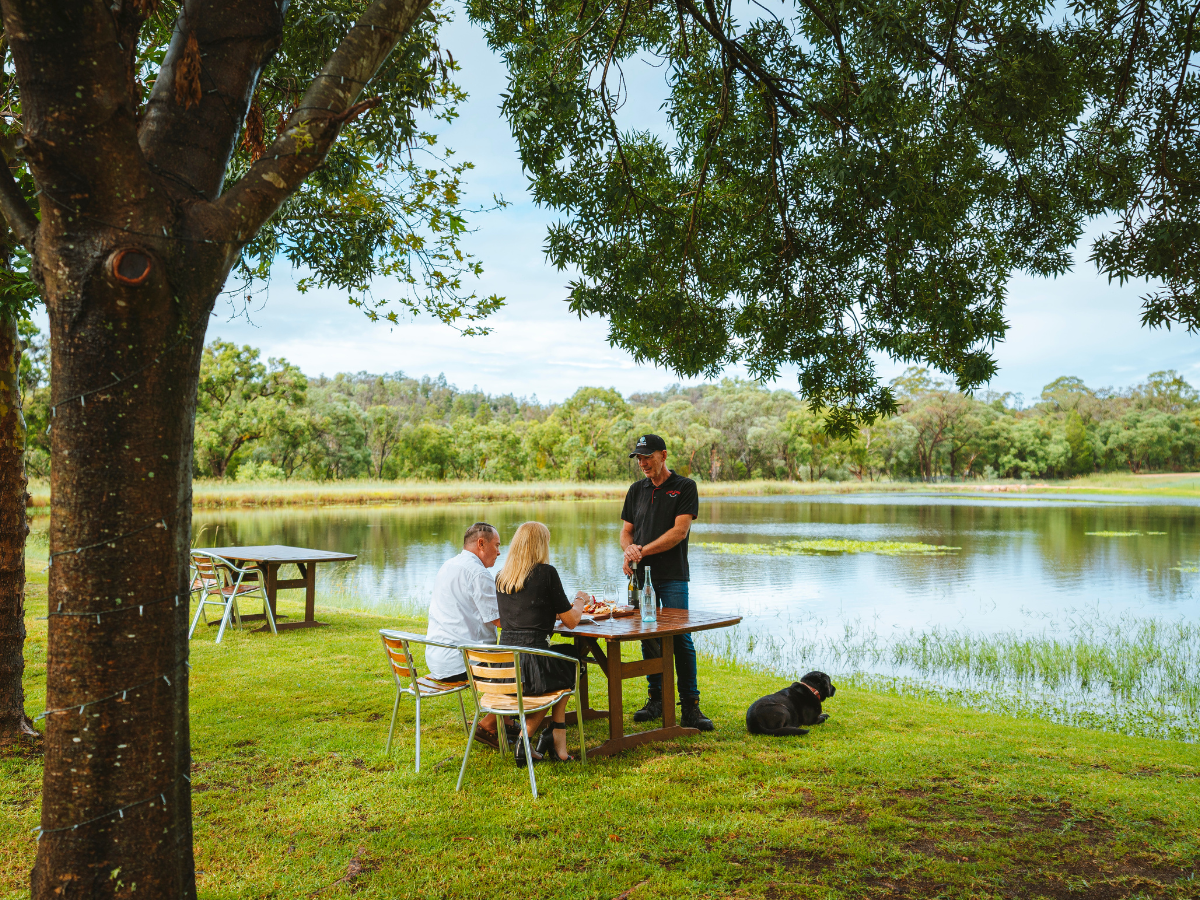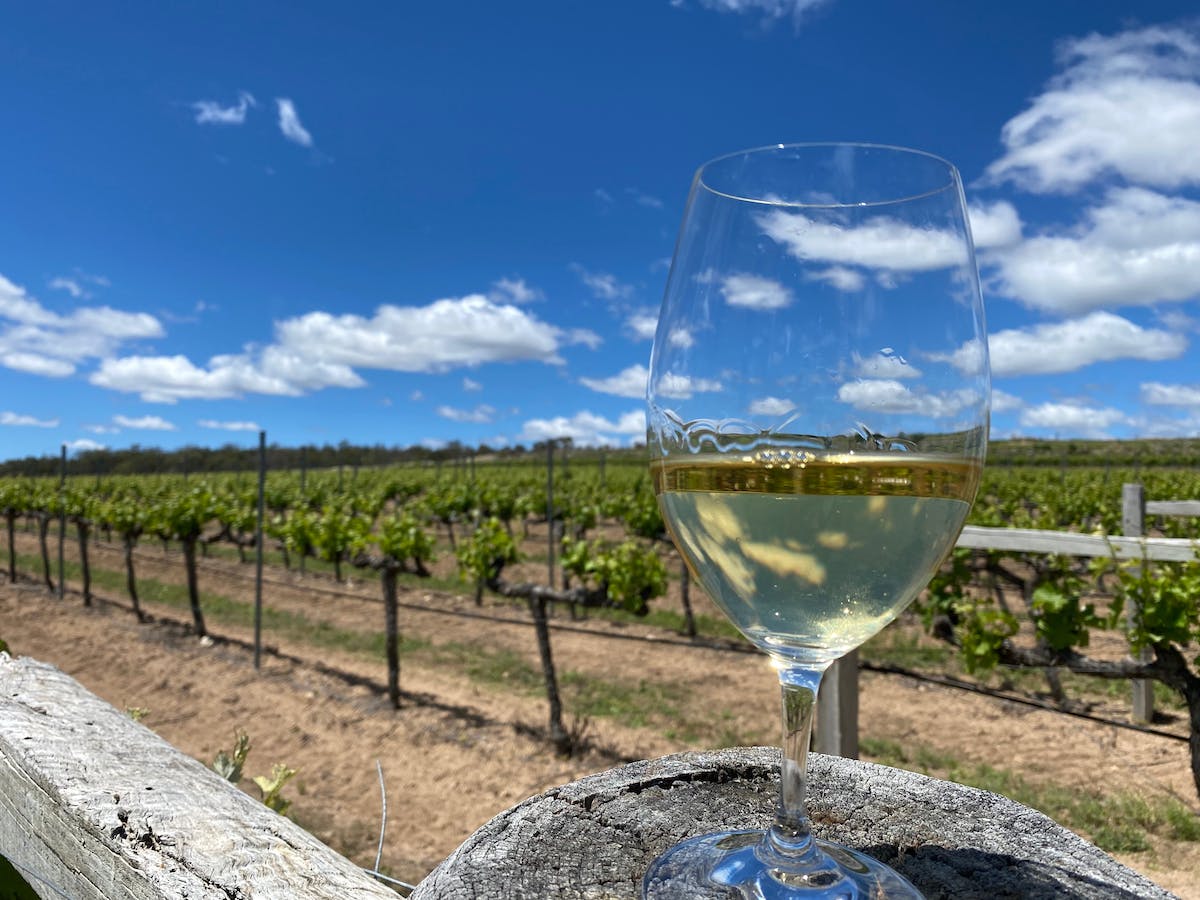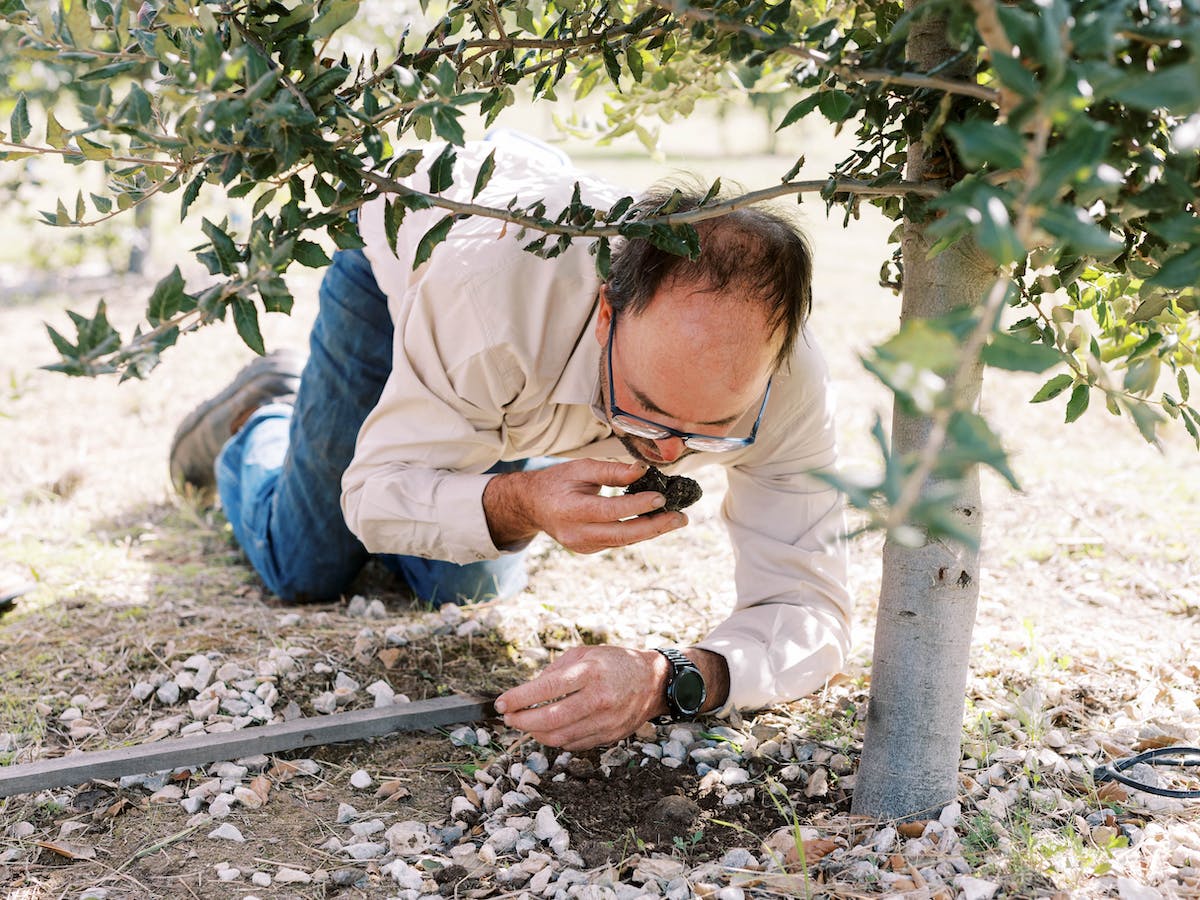Wine taste like a pro at our Granite Belt Wine Country cellar doors with these tips on the finer points of wine tasting…
LOOK, SWIRL AND SNIFF

Pictured above: Balancing Heart Vineyard winemaker Mike Hayes
…Take a Good Look
The colour of wine tells you a lot about its age and taste, even before you put a drop into your mouth.
Hold your glass against a white page, tilt it slightly and really look at the colour. White wines tend to gain colour as they age. Most white wines will have a pale straw colour. Some aromatic white wines (such as viognier and fiano) age well and take on a more golden hue. White wines that come from cooler climates won’t be as golden as those from warmer places.
Almost all red wines start out bright purple but change with age towards a red ‘brick’ colour. Not all red wines have the same colour intensity – pinot noir for example is lighter in colour than many reds.
…Give it a Swirl
Once you have examined the appearance of the wine, swirl it around in your glass to check its ‘legs’ and release the aromas. The ‘legs’ indicate alcohol content only. The higher the alcohol, the more viscous the wine will be and those ‘legs’ will trickle down the sice of the glass longer. It is a myth that long-lasting ‘legs’ denote wine quality.
…Take a Sniff
Swirl the wine around again and put your nose right into the glass, taking a full sniff. What can you smell? Young wines will have fresh fruity aromas and older older ones more earthy or spicy smells.

Pictured above: Savina Lane Cellar Door
NOTE THE Sensation of TASTE
Now, after looking, swirling and sniffing it is time to taste the wine.
…SIP, SWISH & SLURP
Take a good sip. Swish it around in your mouth and note the taste in the back of your throat and how it feels in your mouth (e.g. is it rich and heavy (viscous) or light and thin)? The higher the alcohol content the more viscous the wine will feel – that is it will be kilt, medium or full-bodied. Give the wine a little slurp to release flavours.
The body of a wine is a term used to describe the sense of ‘fullness’ in your mouth. Full-bodied wines are bic and powerful, and light-bodied wines are more delicate and lean.
There are areas on the tongue that sense different taste sensations such as bitter, sweet, sour and salty for example so letting the wine roll over your tongue may assist you to identify more flavours.

Pictured above: tasting at Pyramids Road Wines
IDENTIFY THE FINISH OF THE WINE
…SWALLOW OR SPIT
This is best done by simply swallowing, but many people can assess the finish and still spit the wine out.
If you plan to visit a number of wineries, then use the spittoons provided, otherwise your ability to assess wines as the day passes will diminish as your blood alcohol level increases.
The finish of a wine is just how long the taste of the wine stays on your palate after swallowing. The length of the finish is the final indicator of the wine’s quality. The taste of some exceptional wines will remain on your palate for more than a minute.
The finish is important because it is your final impression of a wine. If the flavours drop off quickly it can be disappointing. A good finish will leave you delighted and wanting another sip.
Plan a paw-fect day out at these dog-friendly Granite Belt cellar doors and vineyards, and get two ‘paws up’ from […]
Granite Belt Wine Country is distinguished by its elevation, making it Australia’s highest wine region and Queensland’s ‘coolest’ location, producing […]
Be taken on a tour of the Granite Belt like a local with Wild Cat Tracks. Make your own itinerary […]
The Folly is Queensland’s first commercial truffle farm, situated in Ballandean, Queensland, at the heart of Granite Belt Wine Country. […]
Welcome to the Granite Belt and Stanthorpe’s luxury wine tour. Wine Discovery Tours provides a personalised tour of the unique […]




